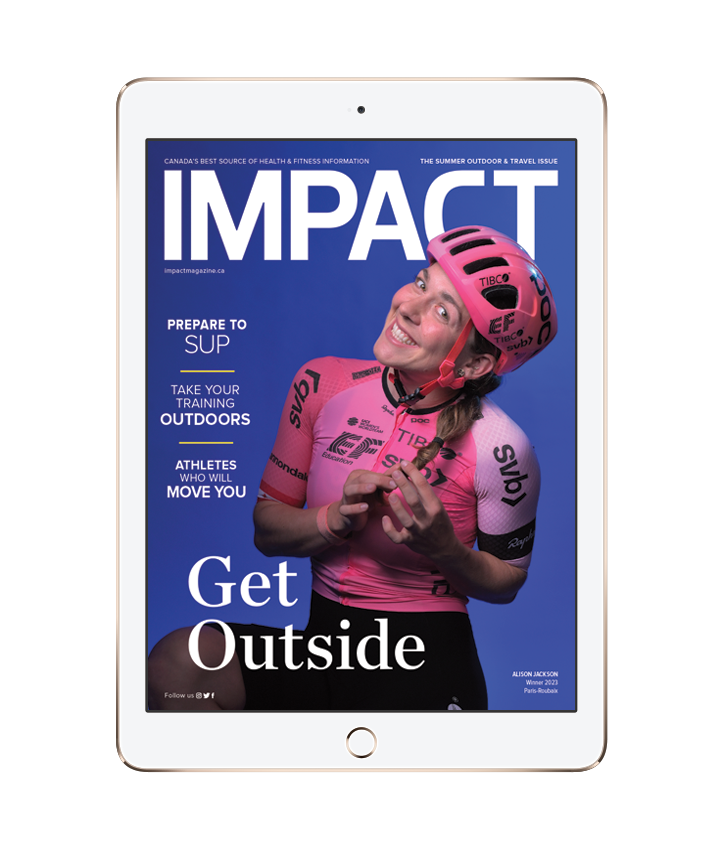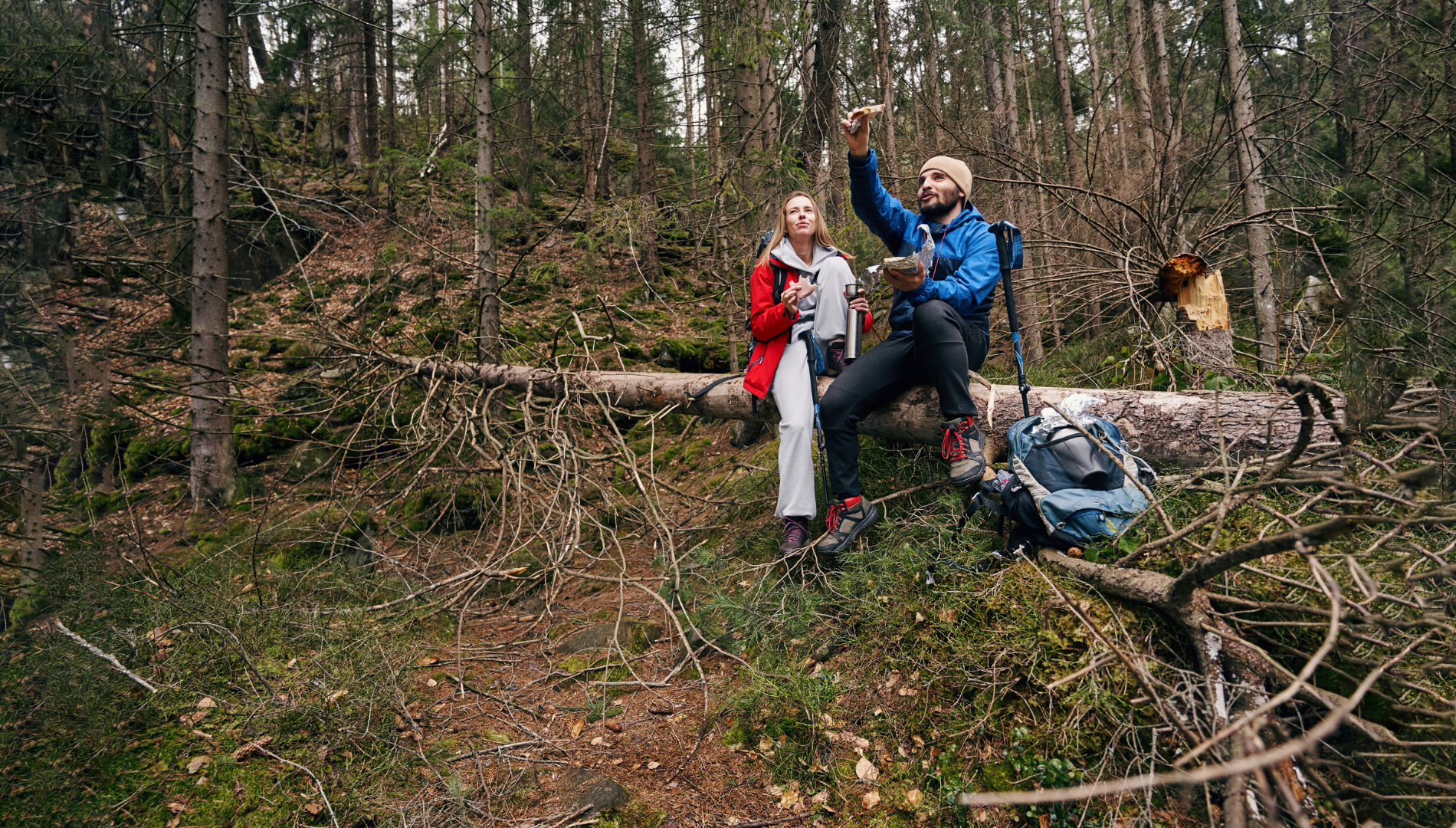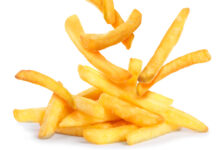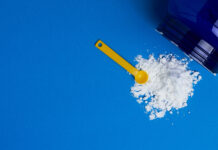Traditionally, hiking food suggestions included plenty of animal products, such as hard-boiled eggs and beef jerky. Back in the day this made some sense; they didn’t spoil easily, their high-fat content meant they provided lots of energy in a small and light package, and they could be eaten while walking without requiring cooking or utensils.
But given the negative environmental and health impacts of conventional animal products, taking them on a hike undermines some of the most important goals of hiking.
So, in the interest of a healthy society that honours nature, I want to talk about how to eat and drink in a way that makes hiking even more enjoyable, healthy, and respectful of the environment. Whether you’re going for a short hike before work or on the weekend, an all-day or a multi-day hike, you’ll discover how to fuel your body with the nutrition and hydration it needs.
What To Eat Before A Hike
Don’t start your hike hungry, especially if you’re going on a strenuous and long hike, as you need to get ahead of your energy requirements. Halfway up a mountain is probably not the place to practise intermittent fasting.
Begin the day with a breakfast that’s low in fat, high in complex carbohydrates (meaning they contain starch and fibre) and contains some protein. In general, whole foods are best, thanks to their full complement of micronutrients, but you may want to dial back the fibre if you’re going on a long hike and won’t have ready access to a restroom.
The goal of your pre-hike meal is to provide fuel while giving your body enough time to digest most of the food before hiking. A good rule of thumb is to consume around 300 to 500 calories at least one hour before a serious hike.
Some breakfasts to eat before a hike include the following:
• Oatmeal with nuts or seeds and fruit
• Breakfast burrito
• Quinoa breakfast bowl
• Plant-based yogurt with homemade granola and berries
• Whole-grain pancakes or waffles with nut butter and fruit
What To Eat During A Hike
For longer hikes, eat a little bit every one to two hours instead of waiting for a large meal in the middle of the day. That way you’ll keep your energy levels high, and your body can remain in motion and limber all day. Your trail food should ideally aim for roughly the following macronutrient distribution: 45-55 per cent carbs; 35-40 per cent fat; and 10-15 per cent protein. The shorter the hike, the less fat you need.
A big camp dinner is fine if you’re ready to pitch the tent and relax for the night. But you don’t want to make your body play the “let’s try to trek and digest at the exact same time” game, which at best will slow you down, and at worst will give you digestive distress that will challenge the digging capacity of an excavator, let alone a potty trowel.
If you’re sweating even a little, make sure to include some salty snacks to replace the sodium that’s released through your pores. And don’t neglect the other electrolytes that you’ll need to
replenish, like magnesium, potassium, and calcium.
For hikes longer than three hours or those in hot environments, go for non-perishable items. No one wants to deal with the black banana that got squished between the granola bar and the water bottle.
Here are some ideas for food you can eat during the hike:
• Trail mix (with nuts, seeds, and dried fruit)
• Nut butters
• Whole-grain crackers and pretzels
• Wraps and sandwiches
• Energy balls
• Granola bars
• Trail meals
Several companies make freeze-dried or dehydrated meals you can bring with you. The nice thing about many of these offerings is that they are light, since you add the water back before cooking. They do involve extra packaging that you’ll have to port out, and not all brands are healthy or environmentally friendly.
What To Eat After A Hike
While you don’t want to gorge yourself after visiting the gorge, there is a 30- to 45-minute post-exercise window when your body is especially receptive to replenishing and repairing muscle tissue.
After a hike, a 4:1 ratio of carbohydrates to protein is ideal. The carbohydrates replace lost muscle sugar and the protein provides amino acids to rebuild muscles. Look for foods that contain both protein and complex carbs.
Some examples of food to eat after a hike include:
• Freeze-dried or dehydrated meals
• Protein-rich shakes
• Smoothies
• Power bowls
• Sandwiches or wraps
For multi-day hikes, aim for around 1.5 to 2.5 pounds of food per person per day. Unless your food is watermelon (which I don’t recommend), that will translate to 2,500 to 4,500 calories, depending on the caloric density of the food. Your caloric needs will vary based on the intensity and length of your hike, your size and weight, and your basal metabolic rate (how many calories you burn just by being alive).
This article is edited for length and reprinted with permission of the Food Revolution Network.
You may also like: Sustainability

Read This Story in Our 2023 Summer Outdoor & Travel Issue
Featuring Alison Jackson, Canadian cyclist and only North American male or female to win the famed Paris Roubaix. Travel the country’s most stunning hot spots by campervan. Become a better trail running by improving your ascents and descents—plus, train outdoors with Canada’s Top Fitness Trainers. Enjoy plant-based summer recipes and so much more.

















